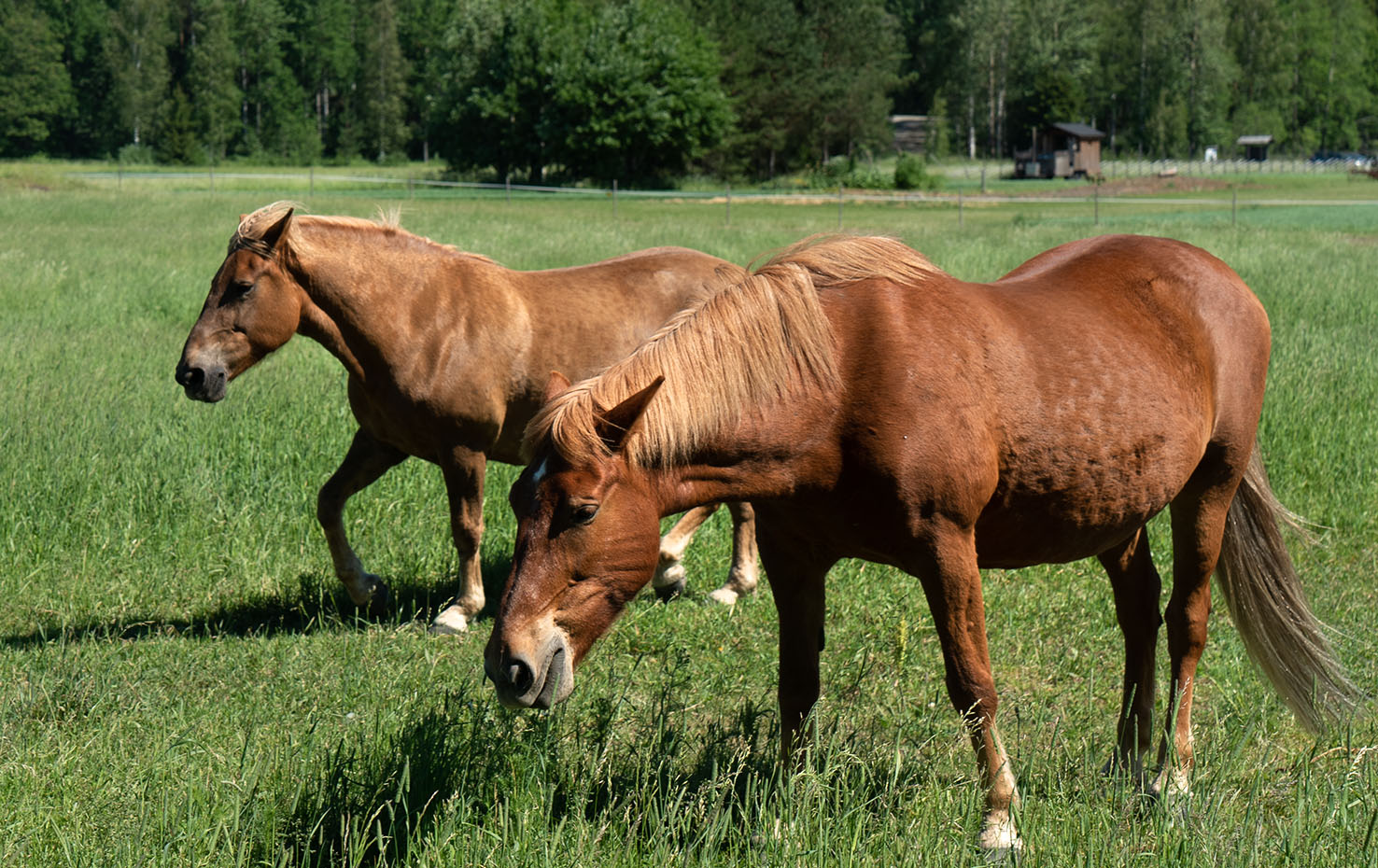
PROJECTS
To participate in and lead different projects is an important part of NordGen’s operations. In close collaboration with public institutions, private companies and other organizations, the overall purpose of all projects is to conserve and promote the sustainable use of genetic resources for Nordic food and agriculture. The funding for the projects is granted by the European Union, the Nordic Council of Ministers, directly from the Nordic countries through its government bodies or from public and private foundations and other organizations. The funding is leading to solutions for a more sustainable society. Below is a summary of some of our more high-profile projects that were active in 2022.
Crop Wild Relatives
Crop Wild Relatives (CWR) are wild species that are closely related to crops. They are of importance to agriculture since traits in these wild species can be transferred to crops by traditional plant breeding approaches. In many cases, wild species have traits that are not present in modern crops, for example pest and disease resistance, tolerance to drought, waterlogging or heat stress. Such traits are of central importance when adapting crops to future climate conditions and diseases and are therefore central for climate change adaptation and future food security.
The Nordic network on CWR was initiated in 2015 with the long-term aim to promote a well-functioning, climate- and environmentally friendly Nordic agriculture by strengthening CWR conservation and facilitating use of CWR. During 2019, the second phase of this network was finalized, and a report was published summarizing the results. The third phase of the project was initiated in 2020 with funding from NKJ (The Nordic Joint Committee for Agricultural and Food Research). Additional funding was granted from the Nordic Committee of Senior Officials for the Environment and Climate in December, which made it possible to expand the Nordic work on CWR during 2021-2024.
During 2022, several activities were carried out within the project with the goal to strengthen in situ and ex situconservation of CWR and facilitate sustainable use. Inventories of CWR were conducted in Færder national park in Norway, Oulanka and Nuuksio national parks in Finland, and Abisko national park in Sweden and seeds of CWR were collected in several locations in Denmark, Iceland, Norway, Sweden, and Finland. To better understand the impact of climate change on Nordic CWR, climate modelling was used to evaluate future geographic distributions under different climate scenarios. The distribution of genetic diversity was studied in selected CWR across the Nordic region using molecular markers. In addition, the five outdoor exhibitions continued to be displayed in all the Nordic countries.
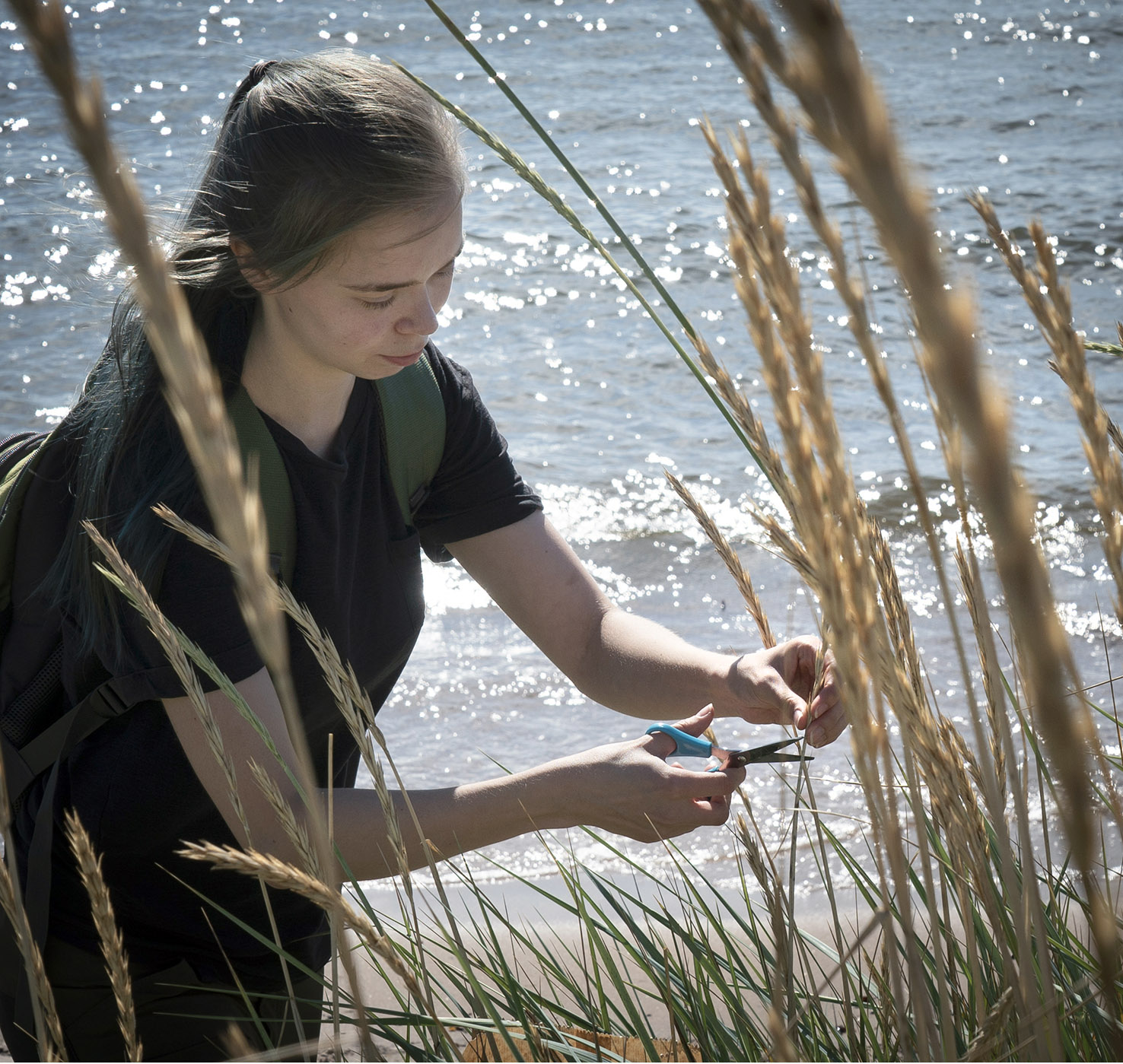
Seed collection of sea lyme grass in Hanko, southern Finland.
NordFrost
In case of extreme events, entire animal populations can be wiped out, since farm animal and fish genetic resources are most often small and locally adapted populations. The native breeds show large adaptation potential and may become crucial for increased resilience of the Nordic agriculture. Within the NordFrost project, stakeholders will develop a regional action plan for Nordic cryopreservation activities. It will develop common procedures for cryopreservation by describing the existing best practices, but also mapping weaknesses so that they can be developed. In the long term, these guidelines will help increase the resilience of the Nordic agriculture.
According to the submitted proposal, “The main objective of the NordForst network is to develop a regional action plan for the Nordic ex-situ in -vitro conservation programmes that will serve as a new tool to increase resilience of agriculture in the Nordic region”. In these programmes cryoconservation of farm animal genetic resources is a crucial tool for the success in management and conservation of genetic diversity in small native farm animal populations. Subsequently, NordFrost project has created roadmap aiming at Pan-Nordic back-up ex situ gene banks for the native farm animal breeds. Related to that, in 2022 NordFrost project focused on the following topics:
- Optimizations of protocol for cost-effective epididymal semen collection for ex situ gene banks in cattle – This allowed us to aid in rescuing the remaining Faroese cattle genetic resources in May.
- Initiation of the assessment and adjustment of legal regulations related to use of epididymal semen – This step of action is required to facilitate the use of epididymal semen in management of the small native cattle populations.
- Study trip to animal gene banks in the UK – This study trip enabled us to discuss about the pros and cons of the different gene banking strategies for animal genetic resources and showed us what the well-managed gene bank looks like.
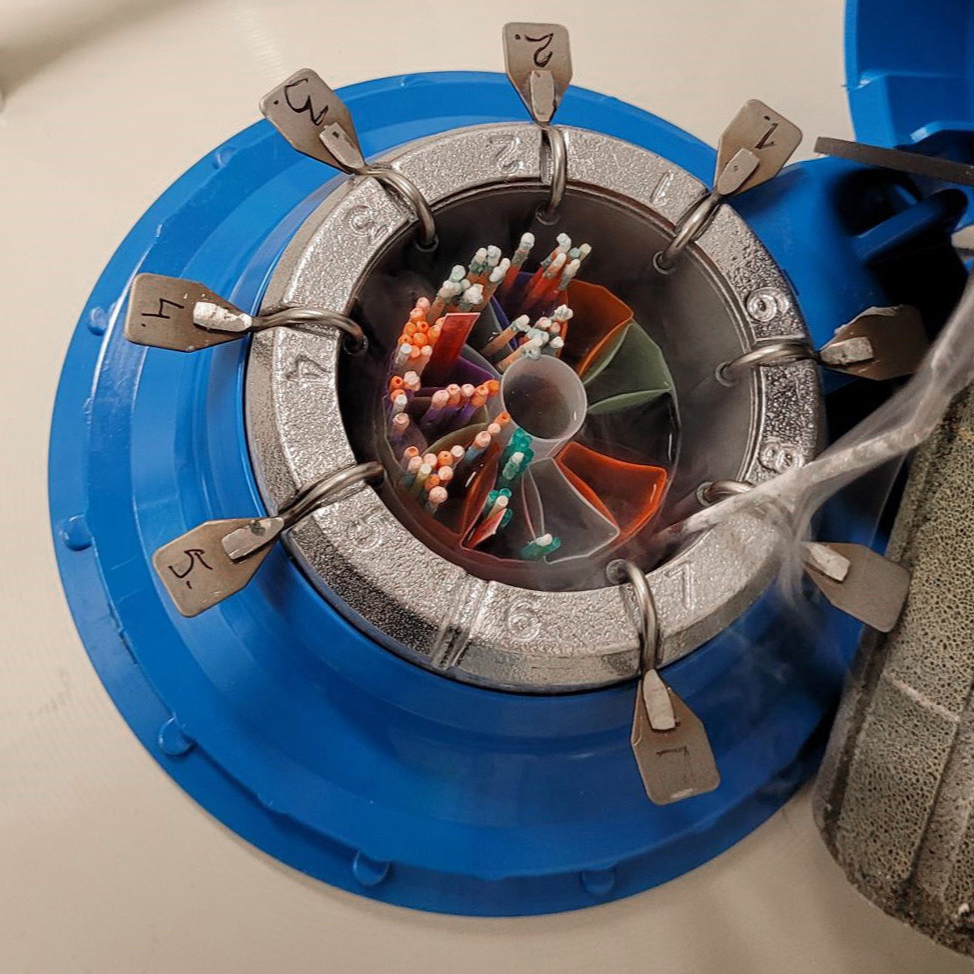
Cryotank, photo: Tuula-Marjatta Hamama.
Nordic Oat Collaboration
In 2022, 764 different accessions (seed samples) of oats from NordGen were sown in the field, among other things to study the plants’ cultivation traits. During the year, a project was developed to genotype all the accessions (i.e. genetic characteristics of the plant individual investigated through DNA analyses). NordGen, Oatly, Lantmännen and ScanOats share equally the costs of the DNA analyzes which are being conducted by bioinformaticians at ScanOats.
NordGen and Oatly have also carried out characterization based on phenotype (physical characteristics such as straw height, grain color, panicle shape and tendency for shattering). The effort required many hours of work in the field, a job that demonstrated the genetic diversity among the 800 oat varieties.
The new data will result in much more knowledge about the collection and provide information on the genetic relationship between all the samples. Because of this, it will be easier for researchers and plant breeders to be able to choose exactly the varieties they have a use for in the future. A better described genebank collection thus becomes more useful for those actors who are interested in developing new oat varieties that are more nutritious, more profitable or better adapted to a changing climate.
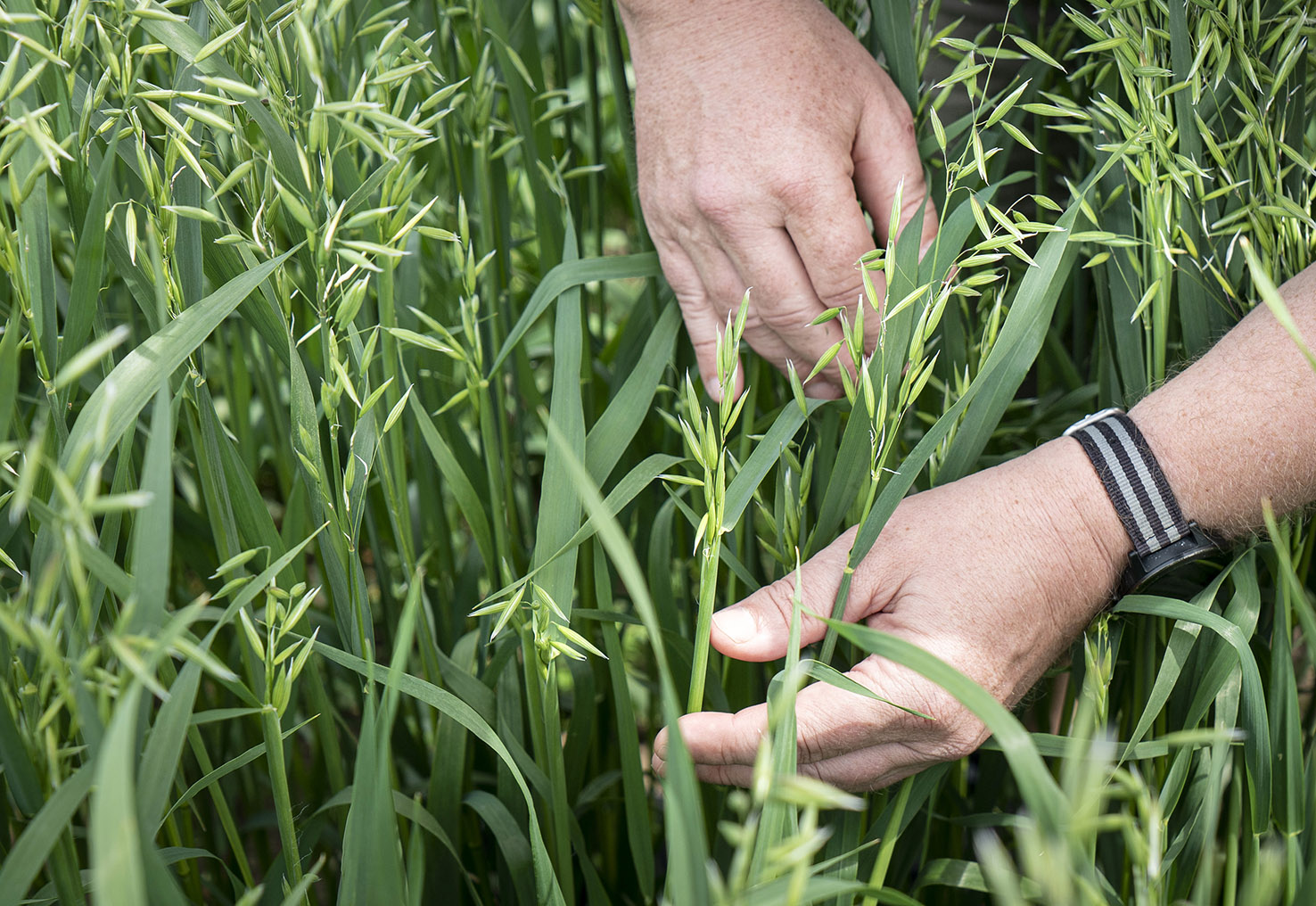
3MC – Nordic Mountain Cattle
The Finnish Northern Finncattle, The Norwegian Sidet Trønderfe and Nordlandsfe and the Swedish Fjällko are three closely related cattle breeds that have played an essential role in the history of the northern parts of Scandinavia. To promote conservation and a sustainable use of these northern mountain cattle breeds, this project utilizes an innovative approach for combining several academic disciplines to give us a more nuanced picture of the history, culture and heritage of the breeds.
The studied fields are historical references, cultural heritage survey and peer support platform, genetic relationships based on archaeological finds and pedigrees and finally game development sector. The project will collect and distribute knowledge of Northern mountain cattle breeds in Finland, Norway and Sweden. Once gathered and consolidated, the information will be made available for everyone interested, for example, through an art vernissage, up-to-date education packages for schools, including a game application. The ultimate goal is to promote the native breeds and increase the opportunities for the local livelihoods and the conservation of genetic resources.
In the final year, the 3MC-team worked on intensively for the preparing a touring exhibition “Snöhvit, Punakorva, Fjellblom” in collaboration with Museum of Torneo Valley. The exhibition was an overview of the project - the past, present and future of three sister breeds. Instead of being displayed only in Torneo Valley, it went to Rovaniemi, Luleå and Gävle. At the museums, more than 23 000 visitors have seen the exhibition.
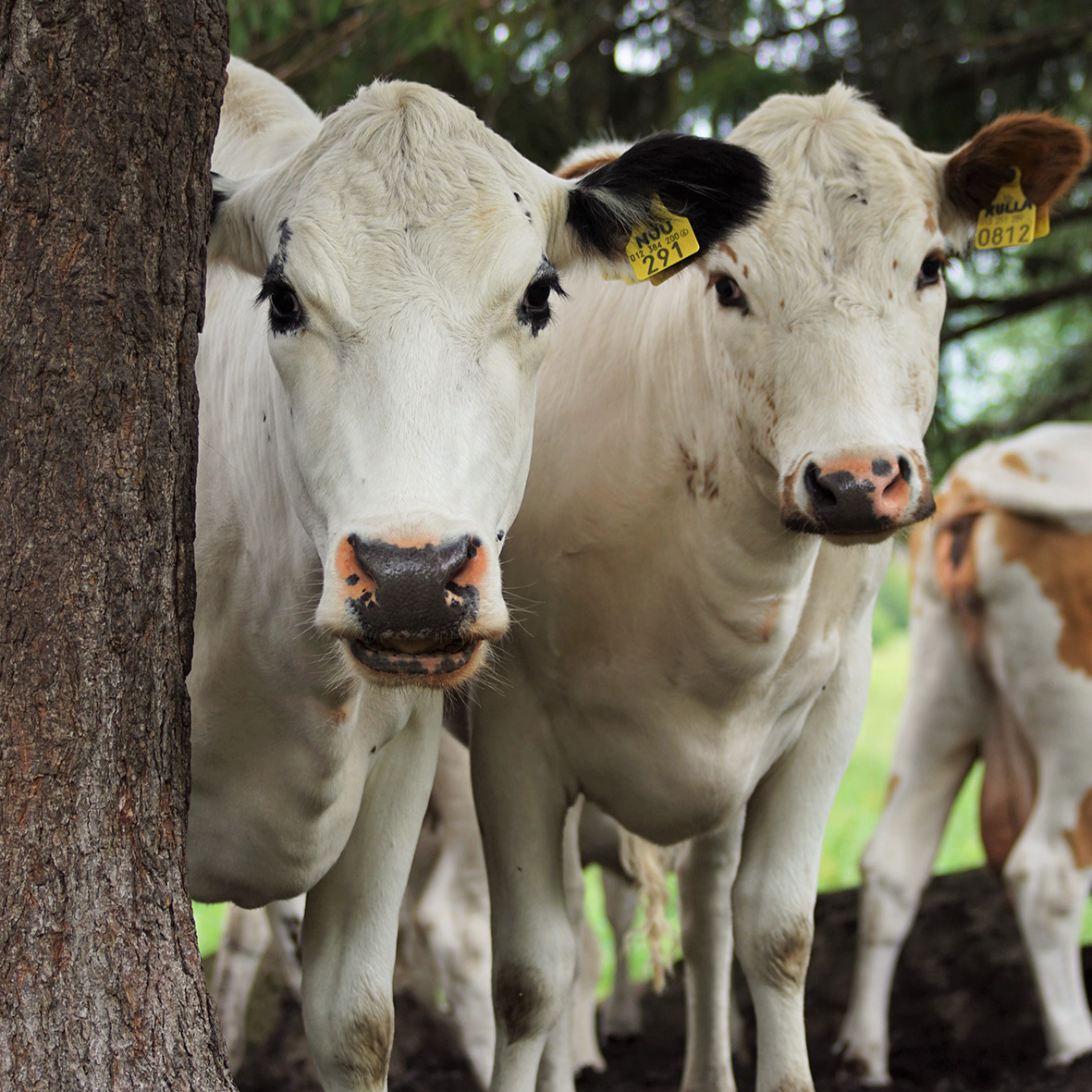
Photo: Suvi Tiainen.
NaNo Horse
Genomic Characterization as a Tool Towards Sustainable Breeding of the native Nordic Horse Breeds (NaNo horse) aims to fill in knowledge gaps by characterizing the standing genetic diversity and relatedness within breeds, and unique variation between the breeds. This information can be utilized by breed associations to make well informed conservation and breeding plans.
The aim of the project is to characterize genomic diversity and inbreeding, within and between Nordic native horse breeds. There are broad knowledge gaps regarding our native breeds, and the true status of their genetic diversity and relatedness. This is an essential first step in describing standing genetic variation within breeds to be preserved, and unique variation between breeds. It can further provide knowledge about genomic regions with unique characteristics and diversity.
This information can be utilized by breed associations to make well informed conservation and breeding plans. During 2022 the project collected all the necessary DNA samples and will continue to process them in 2023. The project will be running from 2022-2024.
